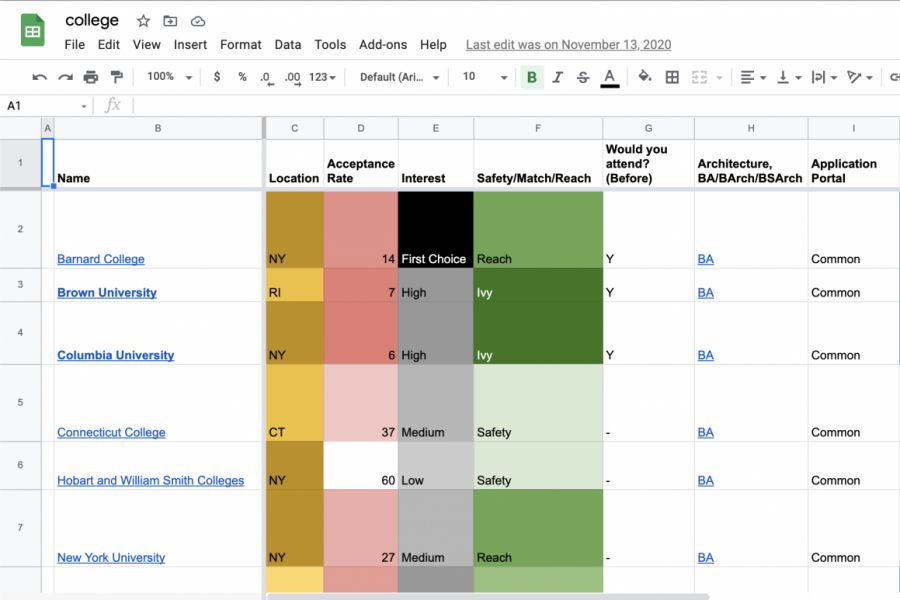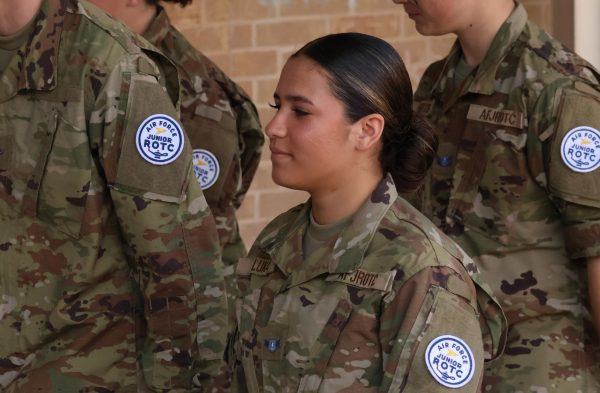Keeping up with college
The current junior’s guide to the college admissions process
April 20, 2021
As this school year winds to a close, juniors might start noticing the onslaught of college letters that arrive in the mail. While they still have plenty of time to start thinking about college applications, those anxious or stressed about the college application process can use this guide to begin planning now.
Keep in mind, however, that apart from the hard deadlines set by college, this process is flexible, so it’s important to go at your own pace and limit comparisons to others.
What can I start now?
While certain aspects of this process will not happen until much later in the year, there are a few things you can start now to streamline the process when things like the Common Application open up.
April to May
1. Build your college list
The first thing to do is start compiling a list of colleges you are interested in. Naviance’s SuperMatch College Search, as well as Niche.com’s college search tools are both great ways to narrow down schools by available majors, location, cost and more.
Many schools also have virtual tours to allow potential applicants to get a feel for the campus. At this point in the process, focus on figuring out what you’re looking for in a college more than on actually narrowing down the list to a manageable number.
2. Get your extracurriculars organized
Creating a resume, or even just filling out the activities section of an application is one of the most tedious but important parts of the application process. Since, you will need to choose your ten most important activities for the CommonApp, Coalition Application and Apply Texas, start compiling and keeping up-to-date on what you’ve done throughout high school. You can create another spreadsheet for this, or even just write it all down in a Google Doc or notebook.
3. Check extra requirements
Some programs, especially arts programs, can require a portfolio or audition. Since these are time consuming things, it’s important to start planning for it now. The last thing you want to be doing is rushing through seven art pieces in two months to meet application requirements.
4. Follow college-related social media accounts
Whether this means following your dream school’s Instagram account or joining r/ApplyingToCollege, keeping up to date with what’s happening in the college application process can be extremely helpful. However, be cautious about the competitive atmosphere about Reddit or College Confidential pages, and don’t let them hurt your confidence.
What can I start this summer?
While deadlines can seem infinitely far away in the summer, keeping them in mind will streamline the process during the fall semester, when you will also be busy with school.
June and July
5. Finalize your college list
Of course, you can always change it if you decide you really want to or don’t want to apply to certain colleges, but around the summer is when you should narrow your choices down. Everyone is different, but a general recommendation would be to shoot for seven to 12 schools. Within that number, make sure there is a decent mixture of safety, match/target and reach schools. When choosing schools, especially safeties, it’s important to only choose places that you would be happy attending. Don’t apply to a safety just because you know you can get in, but because you know you can get in and you would enjoy going there. This way, even your worst-case scenario will still be good.
A great way to keep track of and compare schools is by creating a spreadsheet. You can add columns tracking more general aspects, like tuition or location, as well as columns for things that are specific to you, like whether that school will be a match, reach or safety and what major you would like to apply with. Make sure to make note of application deadlines, since there are no extensions for turning applications in late.
6. Start writing your Common/Coalition Application main essay or your Apply Texas Essay A
While technically the application will not have opened yet, essay questions for the main 2,500 word essay remain mostly the same from year to year. To get ahead, brainstorm possible topics for each of the prompts. If you find an idea that you like, start writing. If you can’t decide between a few ideas, write multiple essays. Even if you don’t end up using these for your main essay, parts of them might be helpful for supplemental questions later on.
7. Tour colleges
With your narrowed-down list, take tours if at all possible. Juniors and seniors only get two excused absences for college visits, so take the extra time during the summer to go visit schools. Campuses may be closed for tours due to COVID-19, so check in advance and schedule tours ahead of time.
What should I do next school year?
Fall is when college applications really start to pick up. By the time school starts, you will have three or four months until the time you will submit your applications.
August to December
8. Ask for recommendations
Even though this step can be pushed later, try asking for letters of recommendation as soon as possible. Many teachers can get swamped with requests closer to application deadlines, so be courteous and keep them in mind when asking.
Most schools require one or two teacher recommendations and a counselor recommendation. For counselor recommendations, you will need to fill out the Google Form on the counseling website to request a letter.
Remember to ask your teachers politely, either in person or over email, and thank them after they send them in.
9. Write your supplements
Many schools have supplemental essays in addition to the main essay. Most of these will be shorter, with some as short as 100 to 200 words. Some of the most common questions asked are the “why this college” essay and the “why this major” essay. Other common themes are diversity, leadership and academic passion, and some colleges prefer more creative questions.
Make sure, especially in the “why this college” essay, to be specific to the school you are applying to. More than convincing the admissions officers that you love the school, you are convincing them that you are the right fit for that school. Do some real research into classes, programs and even professors, as well as clubs and organizations that you would enjoy being a part of on campus. Connect these things to the passions and interests that your application shows through your activities list.
While specificity is important, also remember that it’s totally acceptable to reuse essays you wrote for various schools. If two schools ask similar questions, feel free to tweak what you’ve already written to make it fit better into another prompt instead of starting from scratch.
Each college will update their supplemental questions around the time the Common Application, Coalition Application and others open up on August 1.
10. Review applications
Ask teachers, family and friends to read over your applications. When asking friends make sure they are friends that you trust. College application season can get competitive, and many students have dealt with essays being plagiarized by people they shared with. Use good judgement.
When receiving feedback, it’s important to take it with an open mind while still maintaining the integrity of your essays. Colleges want to hear your voice, so make sure what you submit is an accurate reflection of you.
11. Fill out the FAFSA
The FAFSA opens each year on October 1. To be eligible for federal financial aid, this form needs to be filled out according to the deadlines of the colleges you are applying to. This is an extremely important piece of the application process and requires a lot of tax documents and parent input, so make sure you’re aware of these deadlines and start the process well in advance.
December to January
12. Submit your applications
Most application deadlines are in December and January. If you are applying early decision or early action anywhere, those deadlines might be earlier. Make sure to keep track of deadlines and submit a few days in advance at the latest to make sure your applications go through.
January to May
13. Check your portals
When you submit applications, you should receive a portal login for each college. Check these for updates to your application, making sure your scores and documents have all been received.
This portal is where your decision letter will show up. Don’t obsessively check portals for your decision. Colleges will release a decision date, so try to put it out of your mind until that decision date arrives.
14. Apply for scholarships
While the FAFSA is a good start, it often does not cover the entire cost of college. Research scholarships and fill out applications. Even smaller scholarships can add up to be significantly helpful to paying for your education.
15. Get your decisions
Early decisions will be released around December or January, but regular decisions will take a few more months. March and April are typically the months to expect the majority of your decisions to come in. While receiving positive decisions is exciting, make sure not to internalize any rejections. Receiving rejections just means you accurately chose reach schools, and it is okay not to get into some of them.
16. Decision date
May 1 is the deadline that most schools have to commit, although you can choose to do so well before. When committing, look at all the options you’ve received, taking into account whatever factors are important to you.
Once you commit, send in your deposit and keep track of things like housing applications, admitted student events and more.
While this guide is not all-inclusive, it’s a good starting point to keeping up with this overwhelming process. With the right amount of work, it can become extremely rewarding instead.








